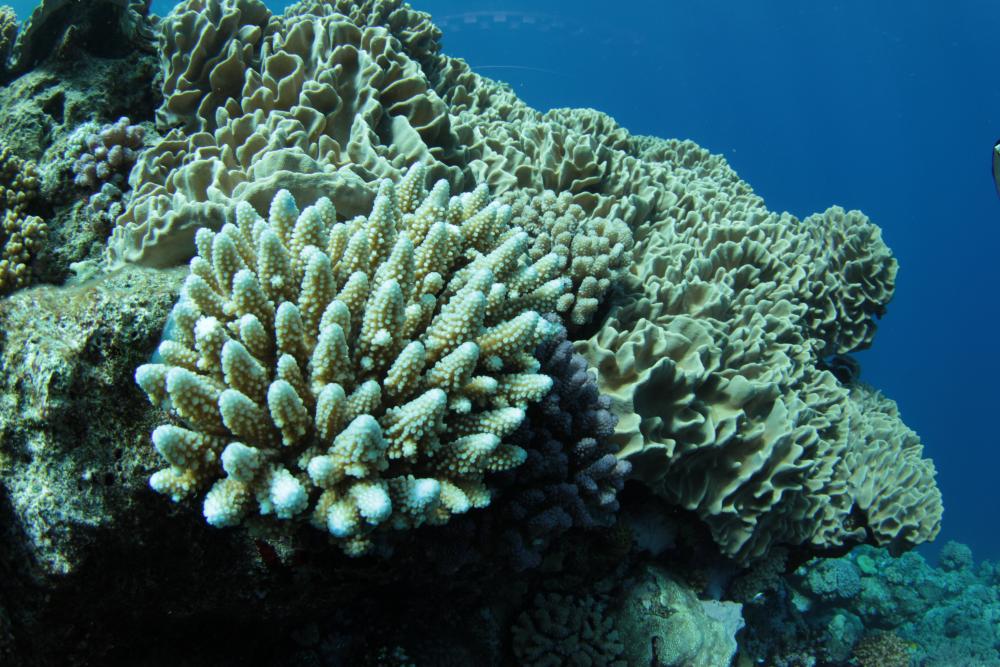POST BLANCO, a mission for an inventory of caledonian reefs
25 avril 2017

From February 24 to March 15, Francesca Benzoni, a marine biologist at the IRD, led a mission of scientists, around Grande-Terre but also in the natural park on the north-western reef of Entrecasteaux, a World Heritage Site Of Unesco. Its aim was to observe and record the state of the corals following the phenomenon of bleaching that had affected New Caledonia.
Most corals, which had bleached in 2016 during a massive episode of this phenomenon have recovered indicated, at the end of March, Francesca Benzoni, marine biologist at the IRD. A news that can be considered quite good for the Caledonian reefs when we know that the opposite was observed on the Great Barrier Reef in Australia. "The resilience of all the reefs is quite good, most of them have recovered while a minority is either dead or only partially taken over," said the marine biologist. "We were able to verify that the catastrophe scenario did not take place, even though there was damage as corals died." However, it must be stressed that the "resilience" of the corals is, however, "weakened" by this episode.
Let us remember, between February and May 2016, an exceptional and unprecedented phenomenon of bleaching hit the corals of the South Pacific archipelago, with in places an impact reaching 90% of the surfaces. Caused by rising water temperatures, coral bleaching occurs with the expulsion of symbiotic algae, which provide coral with its color and nutrients.
Currently, a second campaign is underway in the natural park on the reefs of Entrecasteaux, Chesterfield and Bellona.
According to the Fisheries Summaries of the year 2016 carried out by the Fisheries and Environment Department of the Maritime Affairs Directorate, tuna species occupy the first place. They represent 87% of the fish brought in the holds of the New Caledonian fishing boats, then landed at the quay of the peaches in Nouville, but also in Koumac and a little in Lifou.
Of these tuna species, also known as tuna, white tuna remains the predominantly caught species: 65% of production, ie 1 618 tonnes of fish. In the second position, yellowfin tuna is found: 19% of the catch, ie 462 tonnes, followed by marlin: 4% of production (112 tonnes) and bigeye tuna representing 3% of production (72 tonnes).
In the remaining 9%, representing 213 tonnes, there are fish of various species: salmon of the gods, mahi-mahi, wahoo, sailfish or bonito.
